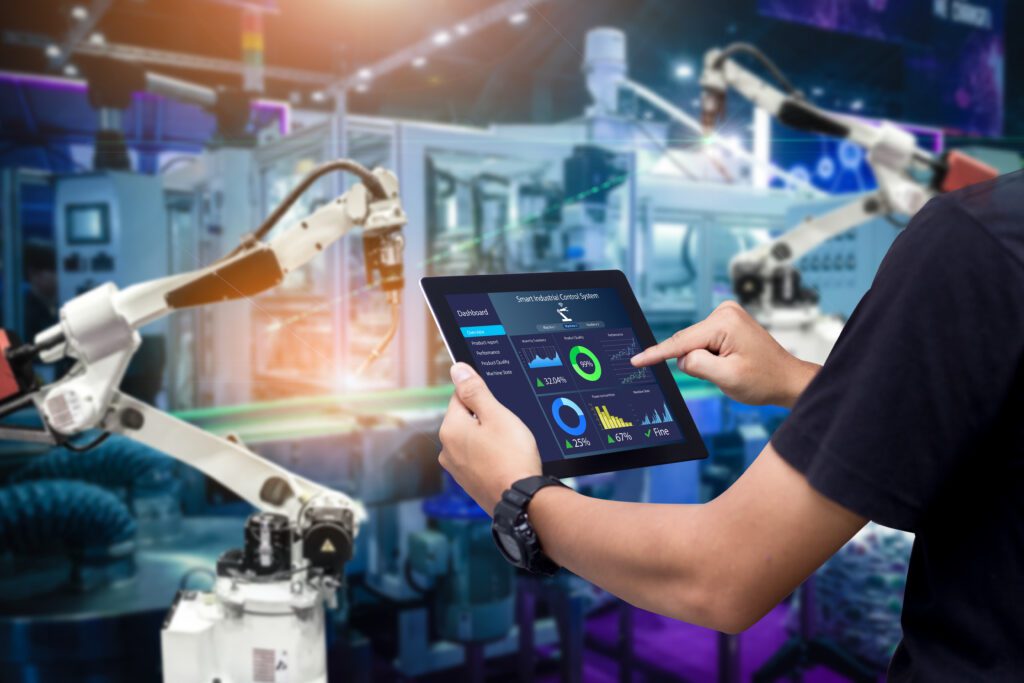
By Roderick Gaines, Research Director for IDC’s Worldwide Supply Chain Strategies Program
In today’s rapidly evolving business landscape, sustainability has become a critical consideration for companies worldwide. As the world faces pressing challenges, such as climate change and resource depletion, businesses are increasingly expected to play a role in addressing these issues. One powerful technological tool that companies can leverage to contribute to sustainability goals is industrial robotics.
Robotics is growing immensely. It is becoming an essential technology in the manufacturing environment and is enhancing sustainability and Industry 5.0 in a variety of ways. As companies continue their journey to a zero net carbon footprint, industrial robotics can help facilitate this transition. By using industrial robotics, companies can achieve their sustainability goals while contributing to the primary dimensions of the triple bottom line of people, planet, and profitability.
Advanced Robotics Provides a Safer Work Environment
Safety and labor are top priorities for industrial businesses around the world. Integrated robotics can help improve workplace safety and employee well-being by redesigning job tasks and taking on the most tedious, repetitive, or dangerous activities. In this way, robotics augments and empowers the human workforce, especially with the arrival of cobots which increase efficiency, productivity, and sustainability. Robotics creates a sustainable competitive advantage, in an era of labor shortages, attracting and retaining the new generation of workers who are looking for a workplace that is more engaging, innovative, and technology-oriented.
Robotics Increase Sustainability Aspirations
Industrial robots are often incorrectly associated with high energy consumption and pollution, yet they can provide immense impact in the short and long term. However, industrial robotics serves another purpose — to increase sustainable outcomes such as reducing energy consumption and waste and tracking and lowering emissions for internal operations and smoother production. Organizations are recognizing these benefits, as over 70% of companies in a recent IDC survey indicated their top business priority for the next 12 months is to improve operational efficiencies and sustainability.
The potential of industrial robots is that they can improve a circular economy. They are able to work with greater precision and accuracy, which in turn reduces the number of raw materials that are utilized. Many industrial robots are equipped with capabilities that enable them to swiftly detect and eliminate defective parts or finished goods from the production line.
Robotics Are Vital to Industry 5.0
The Fifth Industrial Revolution, also referred to as Industry 5.0 is changing how manufacturers operate. This revolution brings a more collaborative approach to humans and robots working together, resulting in even more connected, automated, and efficient processes.
This new emerging phase of the industrial revolution highlights the significance of combining innovative robotics with responsible procedures. It aims to improve the well-being of both people and the environment and is centered on human-robot collaboration. Robots are collaborators in the manufacturing process in Industry 5.0, working side by side with humans to develop more effective and sustainable manufacturing methods.
This partnership not only increases manufacturing process productivity but also protects worker safety, cuts waste, and lessens adverse environmental effects. Industry 5.0’s incorporation of advanced robotics enables businesses to design effective and sustainable manufacturing processes, paving the way for a more sustainable future while meeting companies’ sustainability goals, which is why this solution will be in high demand over the next decade.
Robots play a key role in the connected systems of Industry 5.0. with sensors and machine learning. Robots can collect and analyze data from their environment, which can be used to improve production processes and predict potential problems.
This capability allows for greater visibility and control along with ensuring regulatory compliance and preventing downtime. There are several ways in which robotics is contributing to sustainability, particularly in the areas of energy efficiency, waste reduction, and resource conservation.
In terms of energy efficiency, robotic systems are used to reduce energy consumption in manufacturing processes by automating tasks. Also, robotics consumes less energy as they are capable of operating with little to no lighting, air conditioning or heat. As a result, less energy is required to finish a given task.
Thus, robotics reduces the amount of energy used in the production process, ultimately leading to lower operational costs. Additionally, robots can be programmed to be more efficient in their use of energy, ensuring that energy is not wasted.
The Impact of Robots Goes Far Beyond Sustainability
Robots can positively impact the profitability aspect of sustainability. While initial investments in robotics may require upfront costs, the long-term benefits can often outweigh the initial investment. Robots can improve operational efficiency, reduce production costs, and enhance product quality, leading to increased profitability for companies. Additionally, by incorporating sustainable practices into their operations, companies can enhance their brand image and reputation, leading to increased customer loyalty.
Industrial robotics play a variety of roles in the manufacturing environment that support sustainability. By positively impacting the dimensions of people, the planet, and profitability, robotics can help companies create a more sustainable and responsible business model. As technology continues to advance and the need for sustainability becomes more urgent, integrating robotics into business operations can be a strategic move that benefits not only the bottom line but also the broader society and the environment.
Embracing robotics as a tool for sustainability is a step towards a more sustainable future for businesses and the planet overall. Companies that adopt robotics as part of their sustainability strategy can position themselves as leaders in their industry, demonstrating their commitment to responsible business practices and contributing to a more sustainable world. It is imperative for companies to consider the potential of robotics as a driver for sustainability and take proactive steps toward incorporating these technologies into their operations.
Sponsored by Schneider Electric



